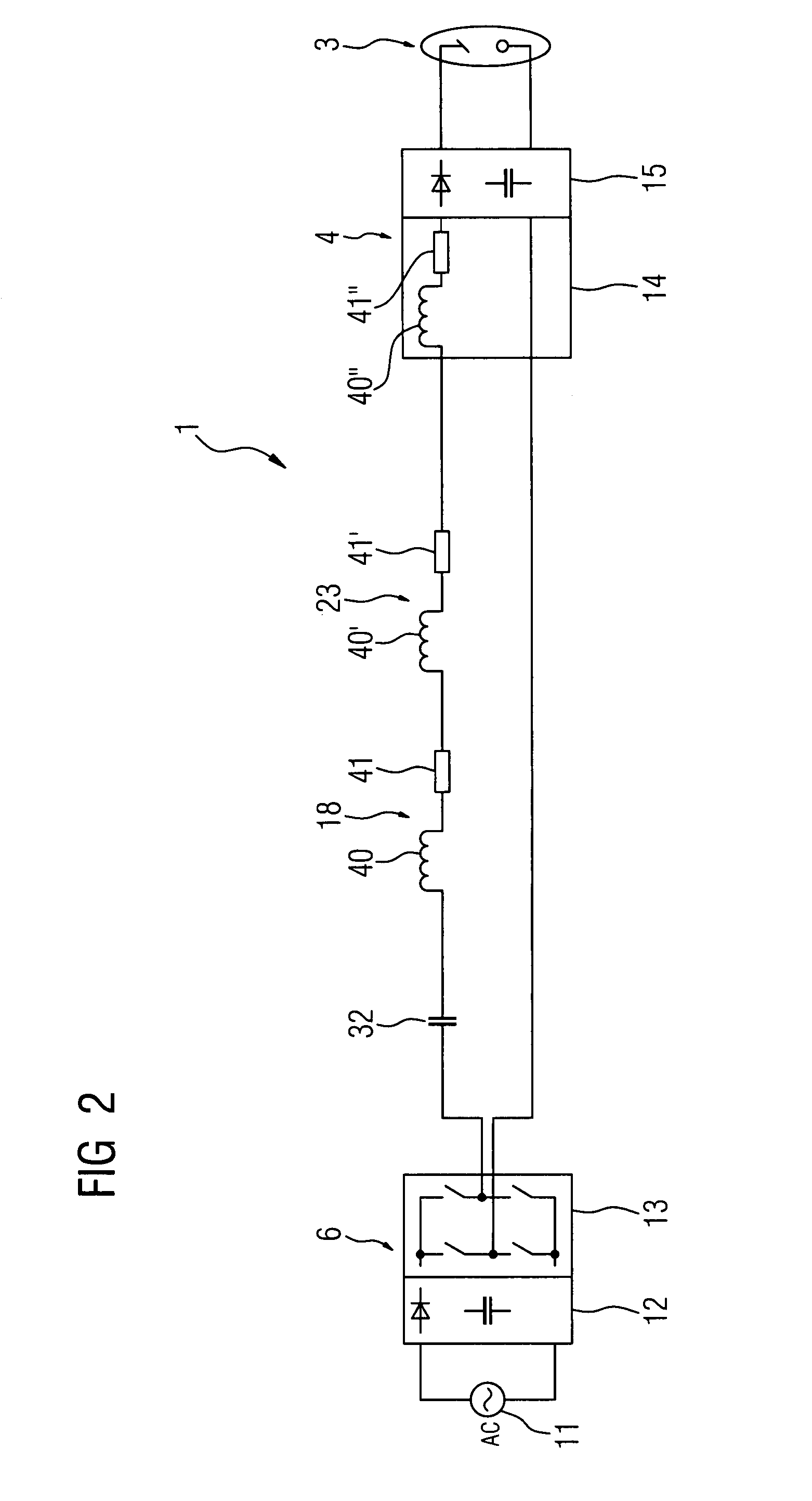X-ray device
a technology of x-ray and x-ray tubes, which is applied in the direction of x-ray equipment, electrical equipment, etc., can solve the problems of storing energy, affecting the operation of the patient, and exposing the patient to unnecessary radiation, and achieves the effect of low power dissipation and loss-fr
- Summary
- Abstract
- Description
- Claims
- Application Information
AI Technical Summary
Benefits of technology
Problems solved by technology
Method used
Image
Examples
Embodiment Construction
[0029]FIG. 1 shows a diagram of an X-ray device 1, comprising an X-ray source 3, said source being supplied with the required high voltage or energy by a high voltage generator 4. To generate the high voltage, the high voltage generator 4 is connected at the input end to the output of an inverter 6, which generates at the output en d the AC input voltage required by the high voltage generator 4. The inverter 6 is connected to a conventional power supply, shown here by the AC voltage source 11.
[0030]The transmission line between the inverter 6 and the high voltage generator 4 is altogether configured as a resonance network 9, which has a resonant transmission frequency set with maximum output at the operating point of the inverter 6. When an AC input voltage is transmitted at the resonant transmission frequency of the resonance networks 9, there is low power dissipation and low emission of magnetic fields.
[0031]In order to generate the high voltage required by the X-ray source 3, the...
PUM
 Login to View More
Login to View More Abstract
Description
Claims
Application Information
 Login to View More
Login to View More - R&D
- Intellectual Property
- Life Sciences
- Materials
- Tech Scout
- Unparalleled Data Quality
- Higher Quality Content
- 60% Fewer Hallucinations
Browse by: Latest US Patents, China's latest patents, Technical Efficacy Thesaurus, Application Domain, Technology Topic, Popular Technical Reports.
© 2025 PatSnap. All rights reserved.Legal|Privacy policy|Modern Slavery Act Transparency Statement|Sitemap|About US| Contact US: help@patsnap.com



